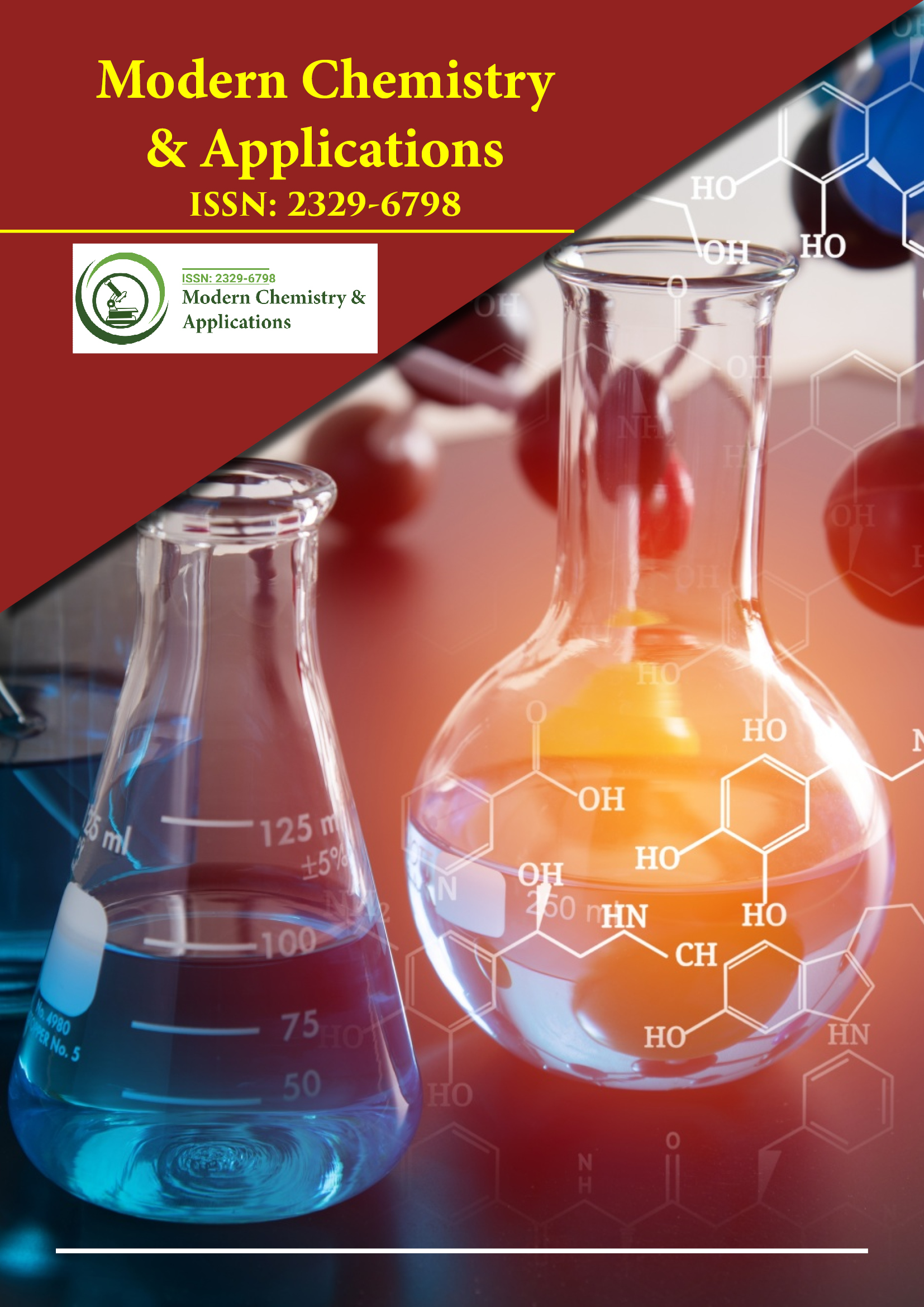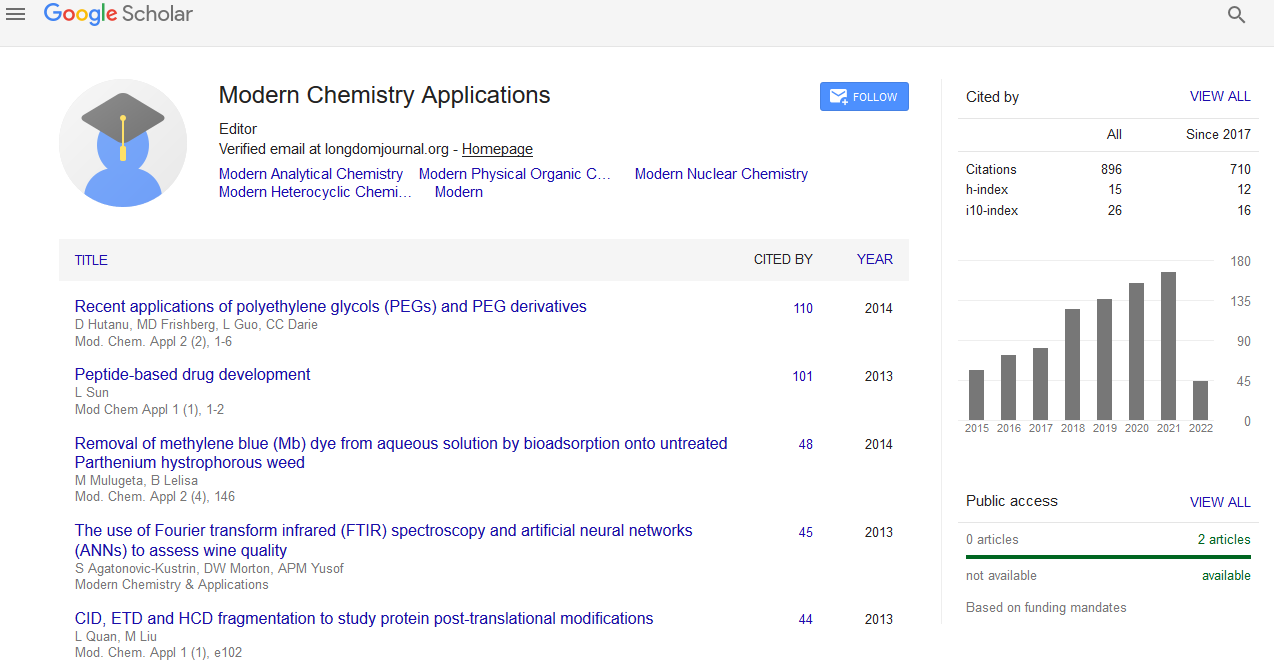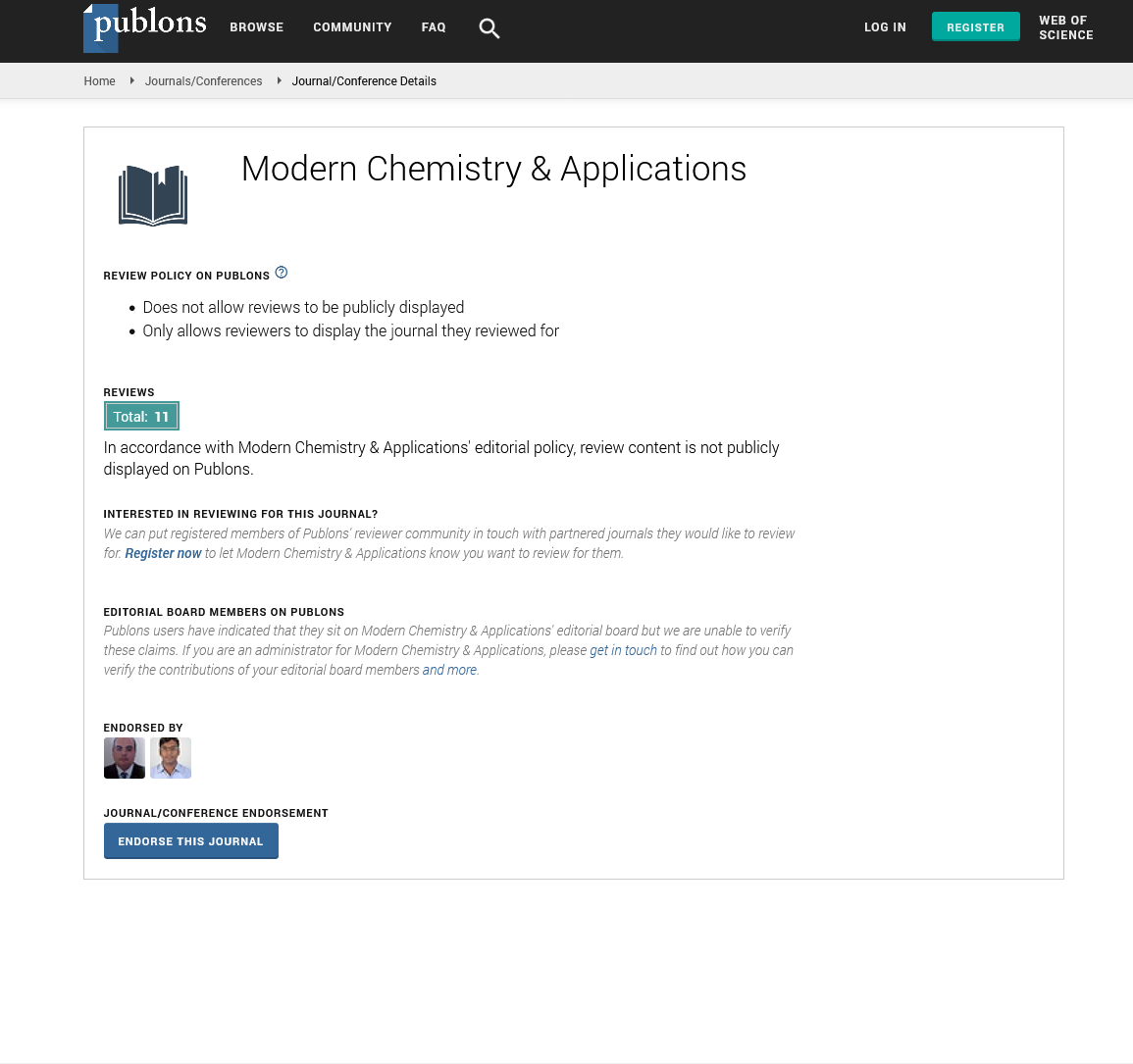Indexed In
- Open J Gate
- JournalTOCs
- RefSeek
- Hamdard University
- EBSCO A-Z
- OCLC- WorldCat
- Scholarsteer
- Publons
- Geneva Foundation for Medical Education and Research
- Google Scholar
Useful Links
Share This Page
Journal Flyer

Open Access Journals
- Agri and Aquaculture
- Biochemistry
- Bioinformatics & Systems Biology
- Business & Management
- Chemistry
- Clinical Sciences
- Engineering
- Food & Nutrition
- General Science
- Genetics & Molecular Biology
- Immunology & Microbiology
- Medical Sciences
- Neuroscience & Psychology
- Nursing & Health Care
- Pharmaceutical Sciences
Perspective - (2025) Volume 13, Issue 1
Nanocatalysts enhancing efficiency in chemical transformations
Mehmet Yilmaz*Received: 26-Feb-2025, Manuscript No. MCA-25-29059; Editor assigned: 28-Feb-2025, Pre QC No. MCA-25-29059 (PQ); Reviewed: 14-Mar-2025, QC No. MCA-25-29059; Revised: 21-Mar-2025, Manuscript No. MCA-25-29059 (R); Published: 28-Mar-2025, DOI: 10.35248/2157-7560.25.13.488
Description
Nanocatalysts are increasingly being used in chemical processes to improve reaction speed, selectivity and overall output. These materials, which operate on a very small scale, often exhibit properties that differ from their larger counterparts. By working with particles measured in nanometers, scientists are able to influence how atoms and molecules interact, leading to more efficient and cleaner reactions.
Traditional catalysts, which are substances that increase the rate of a chemical reaction without being consumed, have long been essential to many industrial and laboratory processes. However, they sometimes require high temperatures, long reaction times, or excess reagents to function effectively. Nanocatalysts, because of their greater surface area and active sites, often allow these same reactions to take place under milder conditions and with better precision.
The high surface-to-volume ratio of nanoparticles means that more atoms are exposed and available to participate in chemical transformations. In many reactions, only the outer layer of a catalyst particle interacts with the reactants. By making the particles smaller, more of the material becomes reactive. This can lead to better use of the catalyst, reduced waste and fewer unwanted byproducts. It also allows reactions to be more finely tuned by adjusting the shape, size, or composition of the catalyst.
One common use of nanocatalysts is in energy-related processes, such as fuel cells, hydrogen production and environmental cleanup. For example, in hydrogen fuel cells, platinum nanoparticles are often used to speed up the reaction between hydrogen and oxygen. The smaller size allows the platinum to be used more efficiently, reducing cost while maintaining high activity. In pollution control, nanocatalysts are employed to break down harmful gases or convert them into less dangerous substances.
In pharmaceutical chemistry, nanocatalysts have made it easier to perform reactions that require high selectivity. Selectivity is important when making drugs, as it ensures the desired compound is produced without generating similar but undesired molecules. Because nanocatalysts can be engineered with specific surface features, they can favor one reaction pathway over another, improving yield and reducing the need for complex purification.
Catalysts made from metals like gold, silver and palladium are often studied due to their ability to catalyze a wide range of reactions. While bulk forms of these metals may not show much activity, their nanoparticle versions often behave very differently. For example, gold is typically considered unreactive in bulk form, but gold nanoparticles can be highly effective in oxidation reactions. This difference arises from changes in electronic structure and surface interactions that occur at the nanoscale.
In addition to metals, researchers are exploring carbon-based nanomaterials, such as graphene and carbon nanotubes, which offer stability and flexibility in design. These materials can serve as supports or as active catalysts themselves. They are especially useful in reactions involving gases or liquids that benefit from a stable yet reactive surface. By modifying these materials with other elements or functional groups, their performance can be improved further.
Manufacturing nanocatalysts requires careful control over conditions such as temperature, pH and concentration. Advances in preparation methods have made it easier to produce them in uniform sizes and shapes. Consistency is important, as variations in particle size can lead to inconsistent results in reactions. Once made, nanocatalysts are usually tested for their reactivity, selectivity and stability over time to determine how well they perform.
Another advantage of nanocatalysts is the potential for reuse. Many of them can be separated from reaction mixtures using techniques such as filtration, centrifugation, or magnetic separation. This reduces material costs and supports more sustainable production methods. Some designs even include magnetic components, allowing them to be removed from mixtures with a simple magnet.
Despite the benefits, there are still challenges to address. Stability can be an issue, as some nanoparticles tend to clump together or degrade over time. This can reduce their effectiveness and limit their reuse. Researchers are working on coatings and supports to help maintain the structure and activity of these materials during use.
Overall, the use of nanocatalysts is expanding as more industries recognize their value. Their ability to accelerate reactions while using less material and generating fewer byproducts makes them attractive for many types of chemical production. Whether in the development of cleaner fuels, more precise pharmaceuticals, or efficient industrial reactions, these small-scale materials continue to shape modern approaches to chemistry.
Citation: Yilmaz M (2025). Nanocatalysts Enhancing Efficiency in Chemical Transformations. Modern Chem Appl. 13:488.
Copyright: © 2025 Yilmaz M. This is an open access article distributed under the terms of the Creative Commons Attribution License, which permits unrestricted use, distribution and reproduction in any medium, provided the original author and source are credited.


